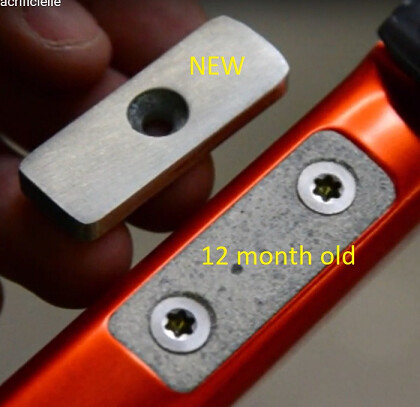That’s not looking like silicone, is it? Other materials will not take the heat well, age and crack prematurely if you combine 16AWG and efoil currents.
On my 6384 efoil setup I just cut the 16 AWG to 3cm length and soldered it to my 8 AWG. It works fine as it will be cooled by the water and the high current is only for some seconds during startup. So you dont really need to replace them from the inside, at least not for FD use.
One question though: I have only used it in freshwater so far, and next season I will try it in saltwater. Will there be leakage currents between phases that can cause problems if the insulations under the “hood” of the motor is not 100%? Or should I just try and see how it goes?
It won’t be a problem, isolation distances are too long to cause any issues. The salt can, in the worst case, corrode the wire strands though. I’ve had wires turn to powder on my ebike due to this (but winter biking in southern sweden can be 4 months of salt spray testing as we put enormous amounts of salt on the roads in freezing temperatures).
The real downside of silicone wires are that heat shrink, even the type with hot glue inside, doesn’stick to the wires. I apply 2-3 coats of liquid electrical tape before heat shrinking the connections, this way there’s a flexible seal with protective outer shell.
Hi…converter app is this ?
Cheers
K
I just googled “voltage drop calculator”
Thanks. Since saltwater gonna ruin your motor anyway, you might as well go for the $50 motors and have some in spare when it fails.
I think @s9tim would beg to disagree. I think with proper rinsing and application of corrosion x from time to time his motor has stayed pristine, aint that right?
Correct, if you put the work in they seem to last a long time.
Hi is it possible to get the reference to the australian battery builder
Thank you
Hi
What vesc controller did you use with the 6384
Thank you
Hi bbe
What controller worked with the 6384 motor
Thank you
True, if you put in the time and money to clean and maintain your toys (efoil, bikes etc) they will last much longer, but if it’s too much effort and replacement is cheap it might be better (for lazy guys like me) to do basic cleaning and then replace motor when corroded (since I don’t have buckets of CorrX either).
In general I like to keep the maintenance time as low as possible, which is a major challenge with diy efoil.
Sparky : Esc is Fvt Seashark 120a running on 10S. If using 6-8s there are other waterproof options
I agree with you 
Best product is the “fit and forget” product that just goes on and on without pampering. Kudos to @s9tim for doing a great job - but i don’t see myself managing the same.
I’ve thought about testing zinc anodes on the efoil, it’s used everywhere on boats but strangely haven’t seen one on an efoil - the environment we’re running in is the same!
Bbe. Thank you. Will try is there a link to the set up parameters
If you buy the ESC you will get the manual. I put a link in the Perth thread and some info in my thread , but I haven’t figured it out completely. I think it’s good value for money, waterproof and less hassle than Vesc
Bbe. Thank you Will do as you suggest Update later
Could you advise me a brand of thermal epoxy? I’m still thinking about my final path
Thanks
https://www.alpinefoil.com/en/kitefoil-hydrofoil-foilboard-pages/af-technologies/sacs.html
Zinc anodes have been used on AlpineFoil kitefoils alu fuselages since their launch (2018) + windfoils more recently. They call it the SACS for Sacrificial Anode Anti-Corrosion System. The competiion is not convinced as most kite.windfoils alu parts are anodized and spend less than one hour per week in water.

I haven’t used thermal epoxies (yet), i looked for cooling options way back when i started with ebikes. What i found then was that the ones with high thermal coefficient were quite expensive. You’ll probably still find cheaper alternatives for the same thermal performance if you look for thermal potting compounds (like 2k silicones) but i haven’t got one to recommend.
